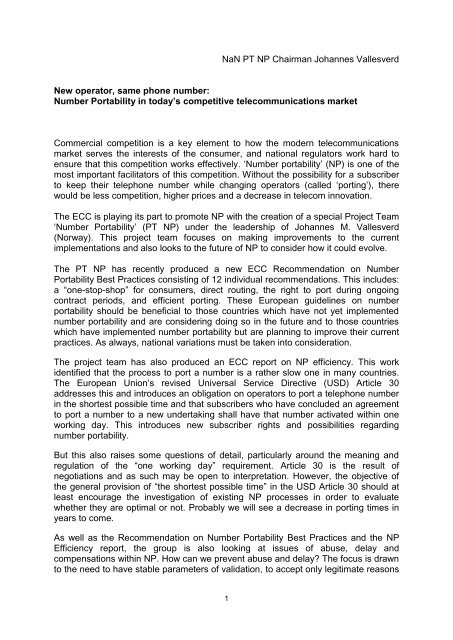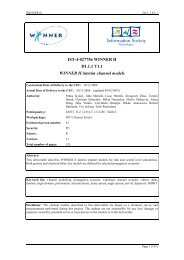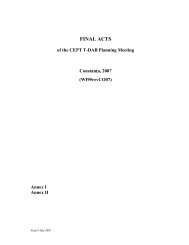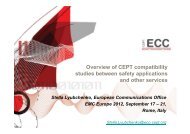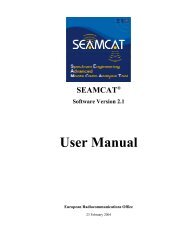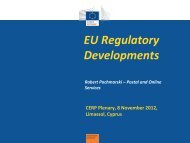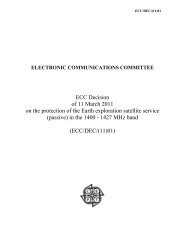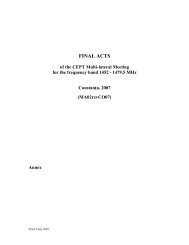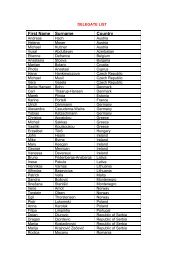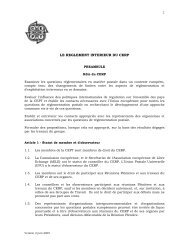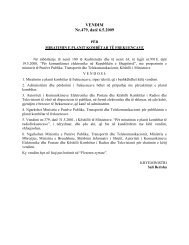Number Portability developments - Cept
Number Portability developments - Cept
Number Portability developments - Cept
Create successful ePaper yourself
Turn your PDF publications into a flip-book with our unique Google optimized e-Paper software.
NaN PT NP Chairman Johannes Vallesverd<br />
New operator, same phone number:<br />
<strong>Number</strong> <strong>Portability</strong> in today’s competitive telecommunications market<br />
Commercial competition is a key element to how the modern telecommunications<br />
market serves the interests of the consumer, and national regulators work hard to<br />
ensure that this competition works effectively. ‘<strong>Number</strong> portability’ (NP) is one of the<br />
most important facilitators of this competition. Without the possibility for a subscriber<br />
to keep their telephone number while changing operators (called ‘porting’), there<br />
would be less competition, higher prices and a decrease in telecom innovation.<br />
The ECC is playing its part to promote NP with the creation of a special Project Team<br />
‘<strong>Number</strong> <strong>Portability</strong>’ (PT NP) under the leadership of Johannes M. Vallesverd<br />
(Norway). This project team focuses on making improvements to the current<br />
implementations and also looks to the future of NP to consider how it could evolve.<br />
The PT NP has recently produced a new ECC Recommendation on <strong>Number</strong><br />
<strong>Portability</strong> Best Practices consisting of 12 individual recommendations. This includes:<br />
a “one-stop-shop” for consumers, direct routing, the right to port during ongoing<br />
contract periods, and efficient porting. These European guidelines on number<br />
portability should be beneficial to those countries which have not yet implemented<br />
number portability and are considering doing so in the future and to those countries<br />
which have implemented number portability but are planning to improve their current<br />
practices. As always, national variations must be taken into consideration.<br />
The project team has also produced an ECC report on NP efficiency. This work<br />
identified that the process to port a number is a rather slow one in many countries.<br />
The European Union’s revised Universal Service Directive (USD) Article 30<br />
addresses this and introduces an obligation on operators to port a telephone number<br />
in the shortest possible time and that subscribers who have concluded an agreement<br />
to port a number to a new undertaking shall have that number activated within one<br />
working day. This introduces new subscriber rights and possibilities regarding<br />
number portability.<br />
But this also raises some questions of detail, particularly around the meaning and<br />
regulation of the “one working day” requirement. Article 30 is the result of<br />
negotiations and as such may be open to interpretation. However, the objective of<br />
the general provision of “the shortest possible time” in the USD Article 30 should at<br />
least encourage the investigation of existing NP processes in order to evaluate<br />
whether they are optimal or not. Probably we will see a decrease in porting times in<br />
years to come.<br />
As well as the Recommendation on <strong>Number</strong> <strong>Portability</strong> Best Practices and the NP<br />
Efficiency report, the group is also looking at issues of abuse, delay and<br />
compensations within NP. How can we prevent abuse and delay? The focus is drawn<br />
to the need to have stable parameters of validation, to accept only legitimate reasons<br />
1
for rejecting NP requests, and to use mainly automated validation methods, good<br />
monitoring procedures and sufficient information and other tools.<br />
A further step is to enable “service portability”, which is another work item of the<br />
project team. Service portability means, in short, the ability for a subscriber to use his<br />
telephone number regardless of the fixed or mobile nature of the service. As mobile<br />
termination rates are decreasing, more and more hybrid solutions pop up. Ultimately,<br />
geographic and mobile telephone numbering ranges can merge into one pool. The<br />
project team looks at the impacts of service portability for the many different<br />
stakeholders.<br />
Furthermore, the project team will monitor some key figures of NP implementations in<br />
the CEPT countries in terms of efficiency, costs, geographic portability, rejection<br />
rates, validation procedures, porting rates, best practice compliance and many other<br />
interesting aspects of this crucial institution of telecommunications.<br />
This article gives a brief overview of our work. Anyone interested in finding out more<br />
is welcome to contact me at jmv@npt.no<br />
Johannes M. Vallesverd<br />
<strong>Number</strong> <strong>Portability</strong> Project Team Chairman (ECC <strong>Number</strong>ing, Naming and<br />
Addressing Working Group)<br />
2


